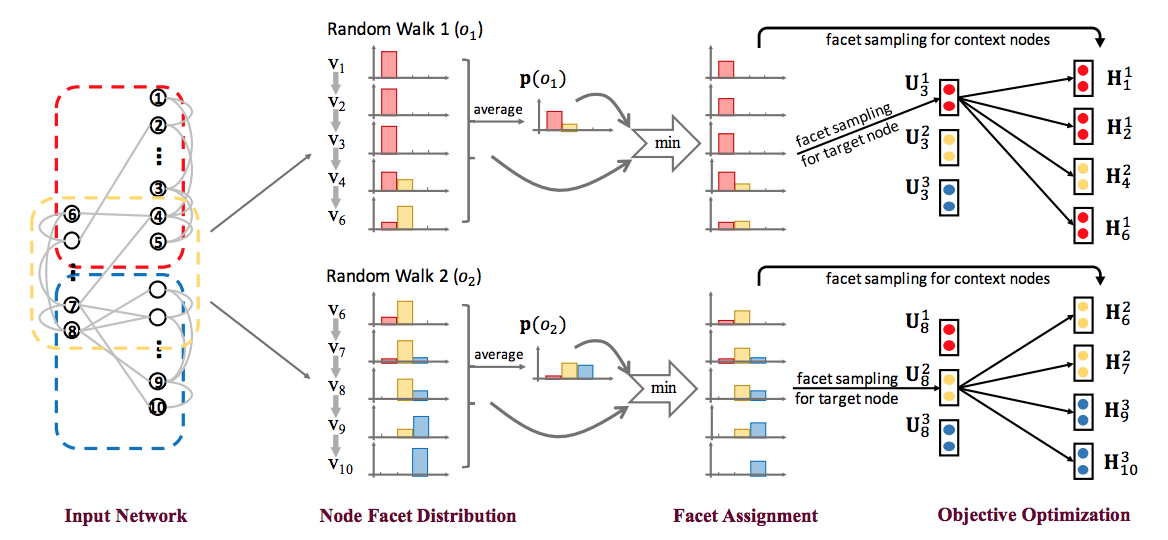Is a Single Vector Enough? Exploring Node Polysemy for Network Embedding
Networks have been widely used as the data structure for abstracting real-world systems as well as organizing the relations among entities. Network embedding models are powerful tools in mapping nodes in a network into continuous vector-space representations in order to facilitate subsequent tasks such as classification and link prediction. Existing network embedding models comprehensively integrate all information of each node, such as links and attributes, towards a single embedding vector to represent the node's general role in the network. However, a real-world entity could be multifaceted, where it connects to different neighborhoods due to different motives or self-characteristics that are not necessarily correlated. For example, in a movie recommender system, a user may love comedies or horror movies simultaneously, but it is not likely that these two types of movies are mutually close in the embedding space, nor the user embedding vector could be sufficiently close to them at the same time. In this paper, we propose a polysemous embedding approach for modeling multiple facets of nodes, as motivated by the phenomenon of word polysemy in language modeling. Each facet of a node is mapped as an embedding vector, while we also maintain association degree between each pair of node and facet. The proposed method is adaptive to various existing embedding models, without significantly complicating the optimization process. We also discuss how to engage embedding vectors of different facets for inference tasks including classification and link prediction. Experiments on real-world datasets help comprehensively evaluate the performance of the proposed method.
PDF Abstract





